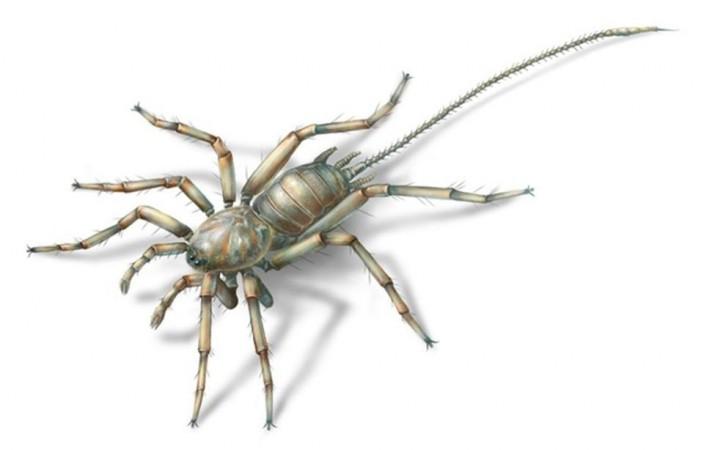
This might be a bad news for all arachnophobes, but it is indeed good news for scientists.
A new species of an arachnid from the mid-Cretaceous period with a whip-like tail has been discovered in 100-million-year-old amber in Myanmar.
According to different papers in the journal Nature Ecology and Evolution, four specimens of the new species have been discovered by two different teams of researchers, including one from the University of Kansas.
Also read: 18 new species of assassin pelican spiders, known as 'living fossils', discovered in Madagascar
The eight-legged creature, which looks like a spider, has been christened Chimerarachne Yingi. While the creature has a few body parts similar to a spider, its uniqueness is a 3 mm "long flagellum, or tail."
Speaking of the tail, KU's Paul Selden explained: "Any sort of flagelliform appendage tends to be like an antenna.

"It's for sensing the environment. Animals that have a long whippy tail tend to have it for sensory purposes."
According to Seldon, [the new fossils] are like the missing link from older animals and modern spiders.
Seldon and another lead author, Dr Giribet, suggested that C yingi belonged to a group of extinct spider relatives called Uraraneida, which had tails.
Researchers believe that C yingi fills a massive gap in the evolution of the nearly 50,000 species of spiders that spin webs and trap preys around the world.
"It's a missing link between the ancient Uraraneida order, which resemble spiders but have tails and no silk-making spinnerets, and modern spiders, which lack tails," said Bo Wang, a palaeobiologist at the Chinese Academy of Sciences in Nanjing and another lead author of the study.
Selden added: "Spinnerets are used to produce silk for a whole host of reasons: to wrap eggs, to make burrows, to make sleeping hammocks, or just to leave behind trails."





!['It's not Mumbai traffic, it's air traffic': Suriya apologises to Mumbai media after paparazzi yelled At Him for making them wait for hours [Watch]](https://data1.ibtimes.co.in/en/full/806234/its-not-mumbai-traffic-its-air-traffic-suriya-apologises-mumbai-media-after-paparazzi.jpg?w=220&h=138)
![Bigg Boss 16-fame Sreejita De and Michael Blohm-Pape exchange wedding vows in dreamy Bengali ceremony [Inside Pics]](https://data1.ibtimes.co.in/en/full/806233/bigg-boss-16-fame-sreejita-de-michael-blohm-pape-exchange-wedding-vows-dreamy-bengali-ceremony.jpg?w=220&h=138)







